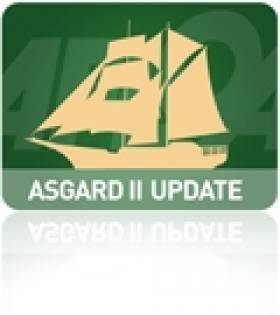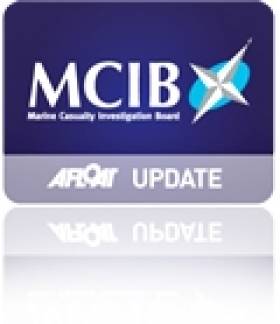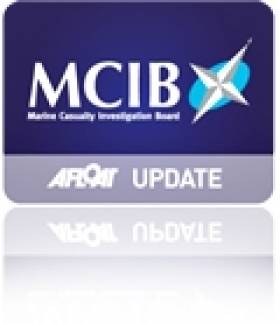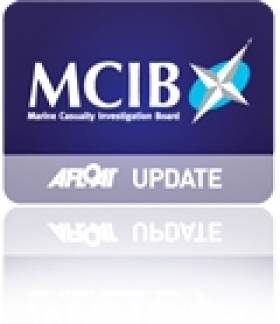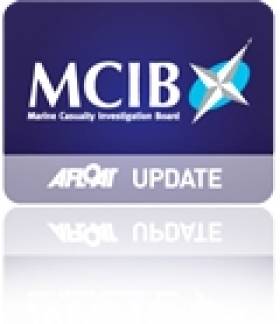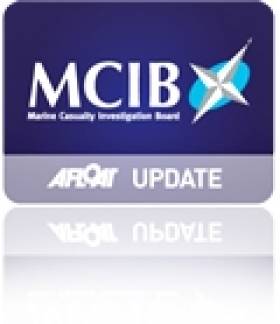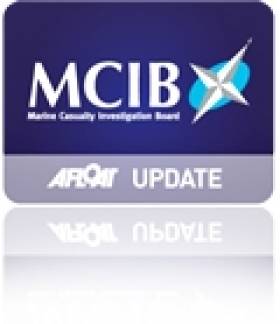Displaying items by tag: MCIB
Collision with Submerged Container Most Likely Cause of Asgard II Sinking - Report
On 10th September 2008 the STV "Asgard II" departed Dournenez, France bound for La Rochelle, France with 5 crew and 20 trainee crew onboard. At approximately 01:00 hrs GMT on 11th September 2008 when off St. Nazaire in the Bay of Biscay water ingress was observed in the Trainee Mess. At 01:05 hrs a Pan Pan message was broadcast. At about 01:15 hrs a Mayday Relay message was received by French Search and Rescue (French SAR) as the water in the Trainee Mess continued rising rapidly. The crew attempted to pump the flood water without success.
The ship was abandoned by liferaft at approximately 01:50 hrs. Two French lifeboats rescued all 25 persons from the liferafts.
During the abandonment the floor of one of the three liferafts launched failed and the persons onboard were successfully transferred to the other liferafts. No loss of life occurred and there were no injuries reported.
Raise the Asgard - Afloat's 2008 online petitionCrew Man Fell Overboard from 'Alma Amy' and Died-Report
The cause of the death was determined by post mortem examination as being due to cardiorespiratory arrest secondary to drowning. The full report is available for download below.
Crew Man Got Caught in Bight of Rope and Pulled Overboard
Report Finds Emerald Star Line Cruiser Ran Aground on Rocks
The Marine Casualty investigation board has issued its Report of Investigation into the grounding and subsequent foundering of an Emerald Star Line Caprice 8, a Charter boat, The boat ran aground on rocks in the vicinity of Mountaineer Rock, off Ryan's Point on Lough Derg, Co. Tipperary last October 9th. The four persons on board were taken off by the Portumna Fire and Rescue RIB and ferried across the lake to Williamstown Harbour. The vessel was noted to have been severely holed. The vessel was pulled off the rocks and subsequently sank while under tow. There were no fatalities and no pollution associated with this incident. A copy of the report can be downloaded below.
The Marine Casualty Investigation Board has advised reports into the "Skellig Light II", Claddaghduff and "Ikom K" accidents will be released later today. Check back here for full details as we have them.
No Direct Cause Found for Loss of Fishing Vessel
An investigation into the sinking of the FV "Strath Marie" off Inishowen Head, Co. Donegal on 14th March 2008 has found no direct cause for the loss of both lives. The FV "Strath Marie" left Bunagee Pier, Culdaff, Co. Donegal to lift strings of pots. Crewmembers Mr. Francis McDaid and Mr. Daniel McDaid were on board.
The weather forecast was for south to southwest Force 3 or 4 with good visibility and slight to moderate sea state. The reported weather conditions on the day were better than the forecast. At 17.17 hrs. on 14th of March 2008 a "999" call was made as the "Strath Marie" was overdue.
At 18.13 hrs. on 14th March 2008 the first casualty was recovered from the water and at 20.38 hrs. the second casualty was recovered. Both men were brought to Altnagelvin Hospital in Derry where they were later pronounced dead.
Parts of the fishing vessel were later recovered and examined along with other evidence to try and establish the cause of the loss of the FV "Strath Marie". The full report is downloadable below.
A Marine Casualty Investigation Board (MCIB) report into the death of Mr. Alain Adler after the six metre boat in he which he travelling capsized from a pier in West Cork in 2008 has found there was no single cause for this casualty. It was the accumulation of several poor decisions which resulted in the capsize of the vessel and related fatality. The post mortem found that Mr. Alder died as a result of acute cardio-respiratory failure and drowning associated with hypothermia.
In the early hours of 5th December 2008, ten people set off from Colla Pier near Schull, Co. Cork in an open boat (with sealed deck) powered by a 30 HP outboard engine to spend the weekend on Coney Island, which lies about one kilometre off the coast of Cork, in the south west of Ireland.
Shortly afterwards the boat capsized resulting in the death of Mr. Alain Adler. The post mortem found that Mr. Adler died as a result of acute cardio-respiratory failure and drowning associated with hypothermia.
The report also concludes that although several members of the group were familiar with boats and the dangers of the sea, none wore the lifejackets/PFD's provided.
The full MCIB report is downloadable below.mcib


























